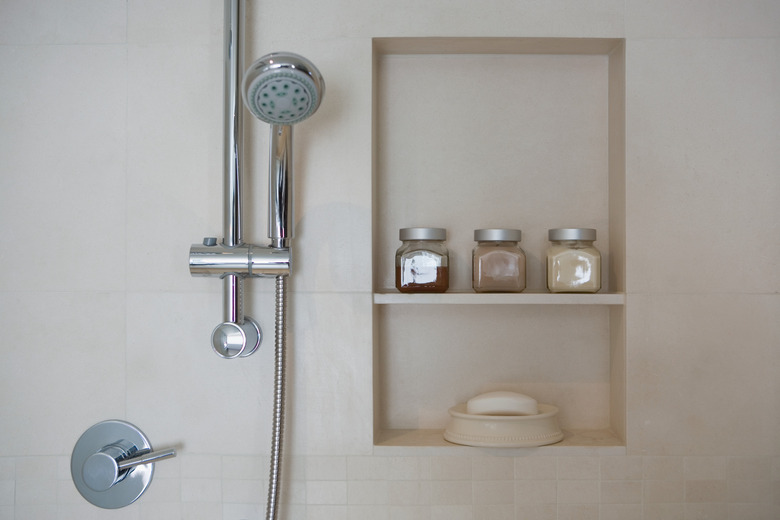Adjusting An Anti-Scald Shower Valve
We may receive a commission on purchases made from links.
Shower water pressure and temperature can be affected whenever water is turned on elsewhere in the home. Anti-scald shower valves — also called thermostatic valves — help you keep the temperature consistent so that you don't have to constantly fiddle with the taps or risk getting shocked by a burst of hot or cold water. It isn't hard to adjust an anti-scald shower valve to achieve your ideal maximum shower temperature, but the design of each particular valve varies slightly based on the manufacturer.
Purpose of Anti-Scald Shower Valves
Purpose of Anti-Scald Shower Valves
A thermostatic faucet can help prevent painful scalds, especially in households where children are learning to use the shower on their own. The water temperature in showers without a thermostatic mixer is limited only by the setting on your water heater and the appropriate influx of cold water. To prevent the growth of harmful bacteria, organizations like PHCP Pros recommend setting household water heaters to 140 degrees Fahrenheit. This is hot enough to create a third-degree burn on the skin after six seconds of exposure, according to the Consumer Product Safety Commission.
On the other hand, thermostatic shower valves allow you to have the best of both worlds: you can keep your water heater at a high temperature to prevent bacteria growth while also eliminating the possibility of skin scald during showers.
Why Anti-Scald Valves Need Adjusting
Why Anti-Scald Valves Need Adjusting
No anti-scald valve is guaranteed to arrive perfectly calibrated, especially when you take into account the variety of water heater temperatures. You'll need to confirm the correct maximum temperature during installation.
And because everyone has different preferences regarding their shower water temperature, you might want to adjust the temperature even lower or warmer than the manufacturer's recommendation after moving into a new home or when the seasons change.
Note that some manufacturers (like Grohe) include an override button in their design, so you can set the maximum temperature to your "typical" preference while still retaining the option of really turning up the heat if desired.
Adjusting an Anti-Scald Shower Valve
Adjusting an Anti-Scald Shower Valve
Although every manufacturer designs their faucets and anti-scald shower valves in slightly different ways, you can follow some basic steps to troubleshoot and adjust your model. First, turn the temperature handle to the maximum setting (usually all the way forward or all the way to the left).
Then remove the handle covering the temperature control knob. Usually, there's a decorative cover that pulls off, levers off when a small flat-head screwdriver is inserted under the edge or has a tab on the side that releases when pressed and lifted. There may also be a screw under this cover, which can be removed with a Phillips screwdriver, flat-head screwdriver or hex key. With the cap removed, you should see an adjustment mechanism, such as a dial or a screw.
Turn the water on and rest the tip of a thermometer in the stream until the thermometer's bar stops moving. Adjust the knob or screw forward or to the left if you want the maximum temperature to be hotter than the current reading or adjust it back or to the right for a cooler reading. Repeat the temperature-taking and adjustment process until you're satisfied, and then reassemble the cap.
